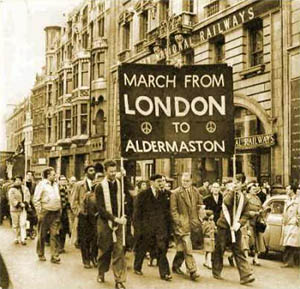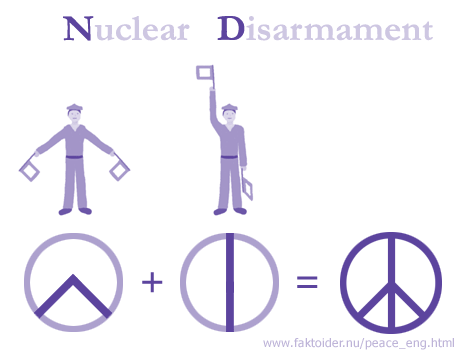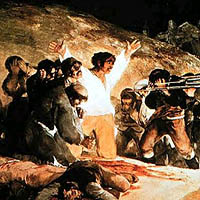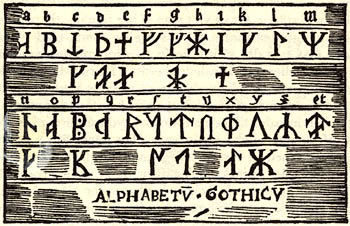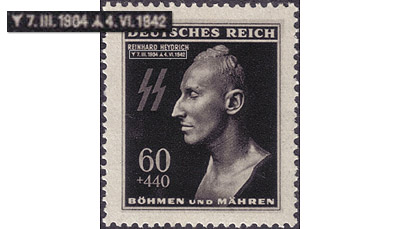|
The Peace Symbol[ This text is also available in Swedish ]
The symbol of peace was designed in 1958 by Gerald Holtom, for the "Campaign for Nuclear Disarmament". It was first used in the march to the Atomic Weapons Research Establishment at Aldermaston, England. Holtom began with Nuclear Disarmament, ND for short, and then took the semaphore signals for those two letters. He combined the symbols, added a ring, and ended up with one of the most well-known icons of our time.
Semaphores is a system for conveying messages by visual signals, in this case with two flags held in different positions. One area where it is still used is at sea, thus the little sailors. Cushing writes: Gerald Holtom, a conscientious objector who had worked on a farm in Norfolk during the Second World War, explained that the symbol incorporated the semaphore letters N(uclear) and D(isarmament). He later wrote to Hugh Brock, editor of Peace News, explaining the genesis of his idea in greater, more personal depth: I was in despair. Deep despair. I drew myself: the representative of an individual in despair, with hands palm outstretched outwards and downwards in the manner of Goya's peasant before the firing squad. I formalised the drawing into a line and put a circle round it. Goya's painting is El tres de mayo de 1808 en Madrid, "The Third of May 1808", commemorating the resistance to Napoleon's occupation. Together with Picasso's Guernica, it is the possibly most archetypal and well known piece of war-related art. Note that the man about to be shot holds his arms upwards; Holtom remebered it wrong.
The symbol designed for nuclear disarmament quickly turned into a symbol of peace; it has never, presumably, been used by people who don't like nuclear weapons but have no problems with wars in general. Sometimes Bertrand Russel is mentioned as being partially responsible for the design, which he wasn't. One suggestion is that it is the footprint of a peace dove. The idea is nice, but has nothing to do with how it was created. A surprisingly common factoid is that the peace symbol should have been first used by no other than emperor Nero, while persecuting early christians. It is often described as a "broken cross", indicating a powerless Jesus, or something similar. I haven't found the slightest trace of historical evidence for this theory. The peace symbol is not anti-christian. The closest thing would be the inverted Cross of St. Peter, associated with him for centuries, but recently got infamous as a supposed satanic symbol - read more about The Cross of Satan.
Among the runes used in northern Europe ca 100-1500 (that is, by many more people for a considerably longer time than scandinavians during the Viking Age), one does resemble the peace sign. This is pure coincidence, as one would expect with such a simple design.
Sometimes the Nazis are mentioned. In the Third Reich one could see birth dates of
nazis, or at least SS-men, marked with a Lebensrune References:
|


